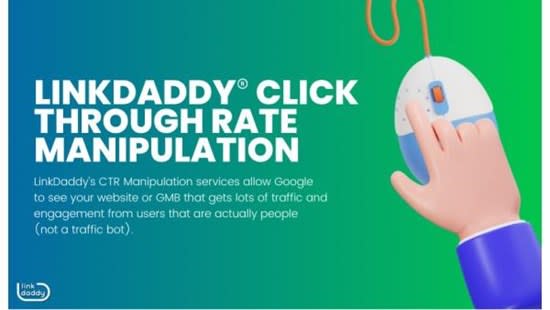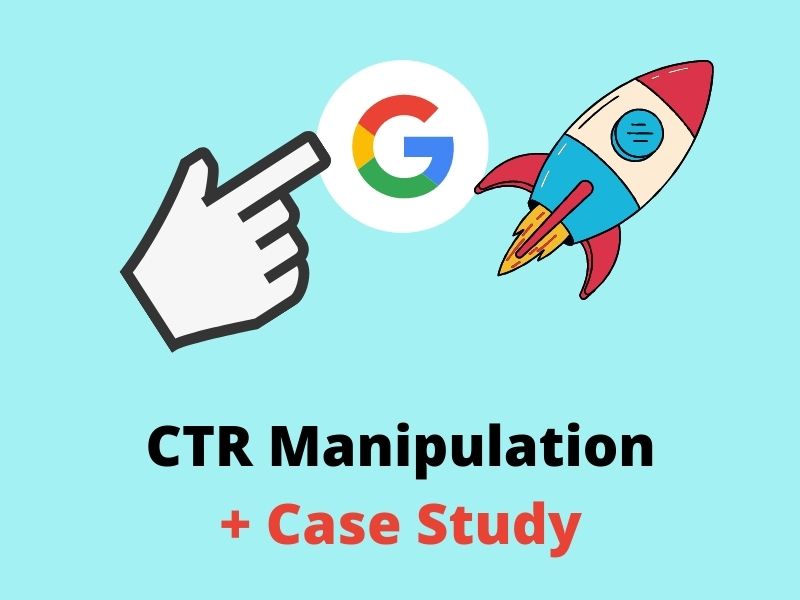Exploring the Connection Between CTR Adjustment Providers and Individual Habits
In the realm of electronic marketing, the influence of click-through price (CTR) control services on customer actions remains a facility and interesting subject. By exploring the intricate connection in between CTR manipulation solutions and user habits, appealing understandings emerge that may reshape our understanding of digital marketing methods and their effects on customers.
Effect of CTR Adjustment on Actions
Examining the impact of Click-Through Rate (CTR) manipulation on customer habits discloses important understandings right into the dynamics of online engagement. CTR manipulation involves synthetically blowing up the variety of clicks on a particular link or ad to deceive users and search engines. This practice can bring about a distorted perception of a webpage's popularity or significance, inevitably impacting user behavior.

Furthermore, CTR adjustment can skew the data made use of by formulas to individualize user experiences. This can result in individuals being served content that does not straighten with their choices or rate of interests, ultimately leading to a decline in customer fulfillment and involvement. Comprehending the influence of CTR control on individual behavior is vital for keeping transparency and count on on-line communications.
Customer Involvement With Adjusted CTR
Individual involvement with adjusted CTR data often brings about manipulated assumptions of online web content popularity and relevance. When users engage with material based on artificially filled with air Click-Through Rates (CTR), they may believe that specific info, items, or services are extra prominent or reliable than they in fact are. This can result in individuals making decisions based upon misleading information, leading to possibly unfavorable end results.
Involvement metrics like sort, shares, comments, and time invested in a website are often influenced by CTR adjustment. Users might be more inclined to involve with web content that appears to have higher interaction prices, additionally bolstering the cycle of skewed assumptions. Consequently, content makers and marketers may prioritize producing content that generates high CTR rather than focusing on creating really beneficial and appropriate material.

Emotional Effects of CTR Manipulation

In addition, the emotional effects of CTR control can likewise show up in transformed decision-making procedures. Users may be extra likely to click material entirely based on its viewed popularity, instead than its real value or relevance to their needs. This behavioral change can lead to a surface involvement with on-line material, where customers might overlook More hints top notch however less popular offerings in support of those with artificially improved CTRs.
Essentially, the psychological ramifications of CTR manipulation highlight the significance of keeping openness and authenticity in on the internet interactions to foster authentic customer interaction and trust.
Ethical Considerations in CTR Adjustment
CTR control raises concerns about deceiving customers, distorting data analytics, and compromising the trustworthiness of on the internet web content. By unnaturally pumping up CTR, users might be misguided right into clicking on web links or advertisements they would not have selected or else, leading to an insincere online experience.
An additional honest facet to ponder is the justness of controling CTR to get an unreasonable advantage over competitors. Participating in such practices not only breaches concepts of fair play yet also weakens the count on that users position in on the internet systems. It is essential for companies and digital marketing professionals to promote moral standards in their methods to make sure openness, integrity, and lasting sustainability in the on-line environment.
Ramifications for Digital Advertising And Marketing
CTR manipulation can lead to skewed information analytics, misleading marketers into believing that their projects are performing far better than they really are. When users understand that CTRs have been manipulated, it can wear down trust fund in the brand, leading to long-lasting negative repercussions for client loyalty and brand reputation.
In addition, the use of CTR manipulation solutions can develop an unjust affordable landscape, where firms that participate in such practices get an artificial advantage over those that comply with ethical advertising requirements. This can suppress technology and site here creative thinking in electronic advertising, as success ends up being even more concerning manipulation techniques than delivering real value to consumers. Ultimately, the effects of CTR adjustment for digital advertising extend beyond temporary gains, influencing the overall sustainability and reliability of marketing initiatives in the electronic realm.
Conclusion
To conclude, the partnership in between CTR adjustment services and customer behavior is intricate and multifaceted. The impact of CTR adjustment on behavior, user interaction with controlled CTR, mental impacts, moral considerations, and ramifications for electronic marketing all contribute fit this partnership. Understanding these dynamics is essential for marketing professionals and researchers alike in order to navigate the ethical implications and make best use of the efficiency of their digital marketing strategies.